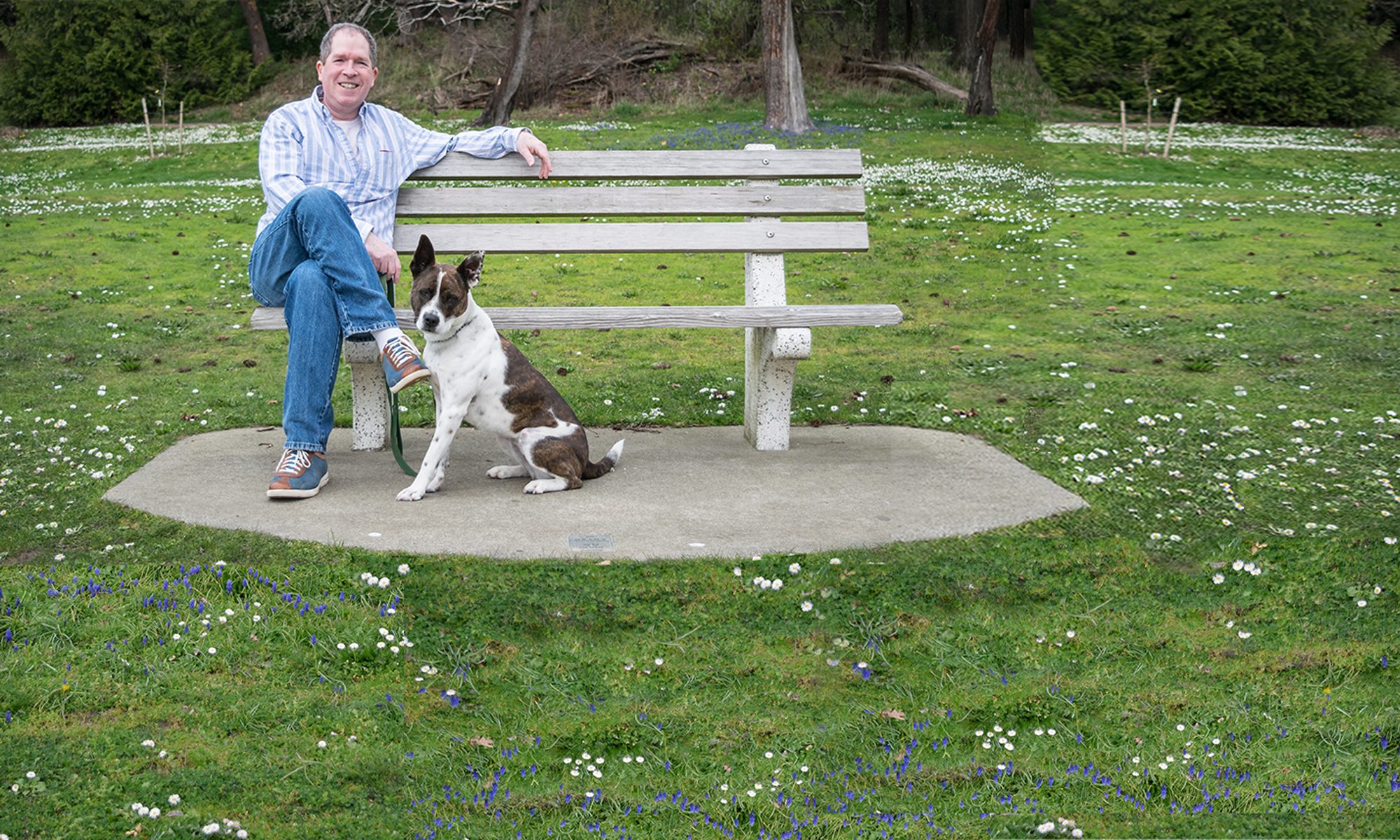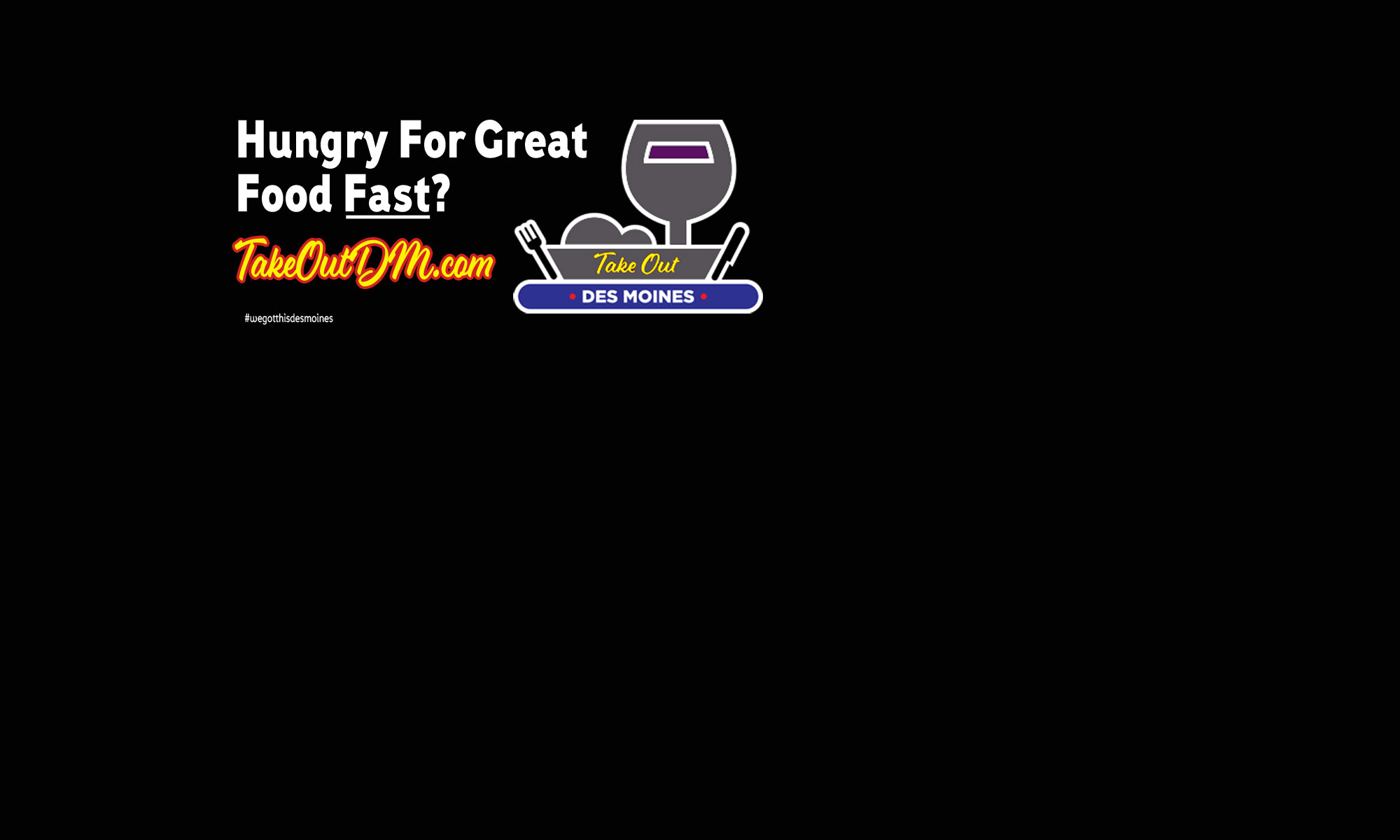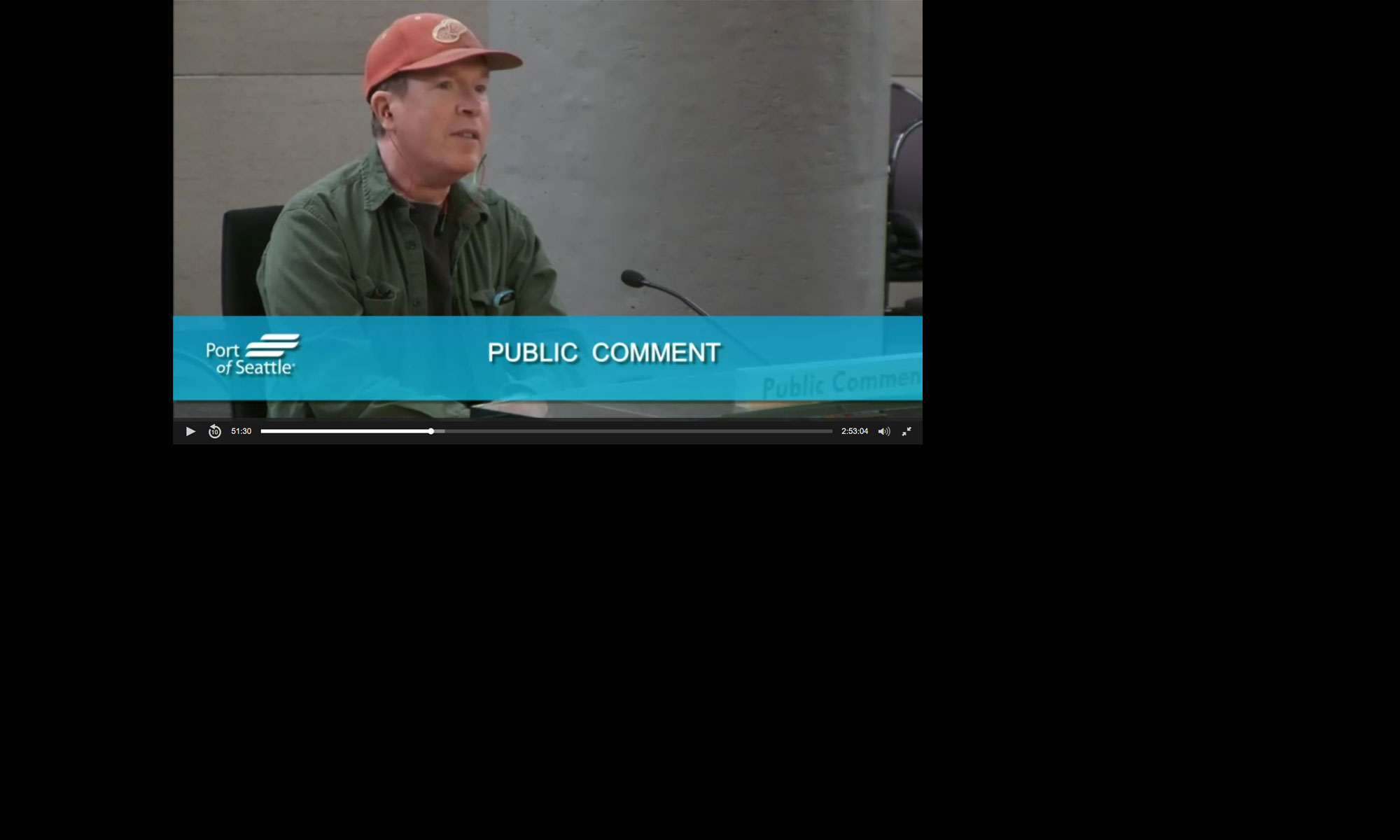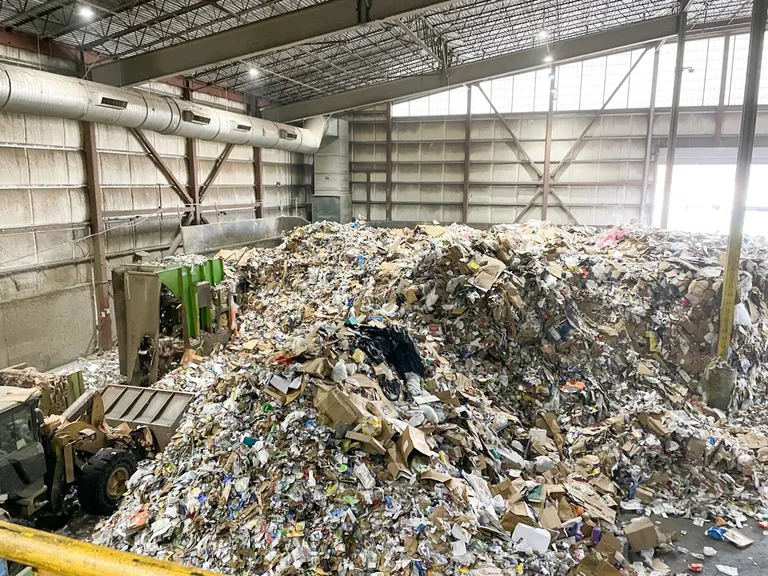Editor’s note: Got questions about recycling that fresh-fruit packaging or envelopes with plastic windows? We’ve got answers. Times editorial board members and Opinion columnists Melissa Davis and Josh Farley made a malodorous examination of what happens to King County’s recyclables. They both grew up with bottle deposits and came away with revelations to solve family disputes about what is actually recyclable and only aspirationally so.
Josh: Hey, Melissa, it’s time to fess up to all these garbage thoughts we’ve had recently. I blame you; after all, you got us a backstage pass to one of the biggest recycling facilities in the state.
Melissa: Trash has been top-of-mind since our tour, Josh — especially the trash we could be recycling rather than just discarding. But it’s the last thing most Americans, who toss around 5 pounds of trash each day, think about. And right now, Washington’s Legislature also happens to be contemplating how we can stop even more stuff from stacking up in the landfill. So it’s a good time to discuss how recycling’s faring in Washington and how we can all do better.
Josh: I can’t un-smell the multistory labyrinth of conveyor belts that carry 250 tons of recycling rubbish daily at Recology’s King County Materials Recovery Facility, or MRF. Somehow, an endless mountain of Amazon boxes, plastic Coca-Cola bottles, Seattle Times newsprint and more is divided, sorted together and smushed into 1,200 pound megablocks. What blew your mind the most?
Melissa: Five things stood out to me. The first is the raw material itself. Recycling customers seem to put anything — anything — in their recycling bin. Toasters! Hypodermic needles! Helium canisters! Just no, people. Let’s not blithely toss flammable gases into bins that, in turn, will be dumped into big metal vehicles. The funny thing is, those objects are weird, but not even the worst of the entrants in these rivers of rubbish. That honor, we learned, belongs to the class known as “tanglers” — the Christmas lights, garden hoses and other decidedly nonrecyclable items that can sabotage the vital and very expensive assembly line.
Josh: I know I was struck by how many items were removed by Recology’s nimble staff, which helps pull garbage from the salvageable items. Truly a shame many things today have such a short life span. Plastics helped make that possible, but so do dastardly corporate strategies like “planned obsolescence” that phase out your iPhone so you have to buy a new one. OK, I’ll get off my soapbox. What’s your second thing?
Melissa: No. 2: If you’re one of those people who rinses, dries and sorts your recycling, you get a gold star. Most don’t, and it shows. More accurately, it smells. A horrific stench drifts from the steaming mountain at the start of the sorting line — think of an oozy soup of dirt, rotten eggs and mold of all kinds. It’s not unlike opening your garbage can and taking a big sniff, but multiplied by about one jillion. I can’t unsee the massive bale of plastic milk jugs speckled with growth I don’t want to contemplate.
Josh: Put simply: Wet is bad when it comes to recycling. And your third?
Melissa: The separation of all those products — plastics, paper, cardboard — onto their own conveyors is a master class in harnessing the laws of physics. Good old gravity sifts containers, pulled by their weight to a lower conveyor belt, from the fiber — paper or cardboard — that is light enough to climb an ascending conveyor. Large magnets pull out metals; aluminum is itself magnetized using what’s known as an eddy current to draw it out. (That is the coolest thing, by the way.) Even more advanced are machines that can identify different plastic products, propelling them to their own tributary with a puff of air.
The entire system isn’t perfect, hence a workforce of human sorters who help further segregate materials, fearlessly and efficiently reaching into the stream to fish out stuff that could wreck the machinery or contaminate the recyclables. But the end result is a chunk of material that can be sold — aluminum cans to a foundry, or condensed cardboard to a mill, say.
Josh: Recology, like others in its industry, faced a reckoning a few years ago to collect and separate cleaner, purer materials through its process. We sent trash masquerading as recycling on container ships to Southeast Asia in what a new book refers to as “toxic colonialism” — the practice of sending waste to poorer nations that aren’t equipped to handle it. Then in 2018 came China’s “Operation National Sword.” The country cut off its welcome mat to such waste.
Melissa: It made recycling companies have to dig in, literally, to find where the value was within recycling. It also made Washingtonians — or it should have, anyway — have a think about our role in all of this. We literally cannot hide from our trash anymore. What more can we recycle and keep out of our already-overburdened landfills? What single-use stuff can we phase out? How can we keep plastics out of the ocean and everywhere else? It’s up to us. A trip through an MRF drives that home.
Josh: Recyclers still sell some of the product overseas. Recology is working with a company in Malaysia, which sent a team to scrutinize the recycler’s operation — down to the janitorial contracts — to ensure they’ll get good materials.
Melissa: And speaking of materials, my No. 4 is the education we got in what you can and cannot recycle. Envelopes padded with Bubble Wrap? Plastic wrap? Shredded paper? They’re all garbage. Shred, as it’s known in the industry, is worthless and has no second life. (This depends on your waste hauler. Not all are so down on shred.)
Aluminum cans, PET (soda) bottles, milk jugs? Recyclable, and in the case of aluminum, valuable. Rinse and sort. Look inside those little arrows on your plastics: The 1s and 2s are the likeliest to actually being recycled; 3-7, not so much, though No. 5, which includes yogurt containers, has made a comeback. Dear readers, I settled this once and for all: Those clear plastic “clamshell” packages that contain berries and grapes and whatnot? Recology does accept them.
Josh: And those clear-plastic windows used for addresses in envelopes? Rip out the plastic before they hit the recycling bin. Finally, your fifth?
Melissa: Last but certainly not least is to simply express dismay at our rates of recycling. Granted, King County and Washington are better than much of the country, but my gosh, we can do better.
Josh: Those in Seattle are leading the charge toward a “circular economy.” Yet recycling here accounts for only about half of the waste generated. That’s better than the average across America, which comes in around a third. But yes, we can do more. And it starts with finally being honest with people about what items can actually be recycled — and what cannot.
Two competing bills in the state Legislature this year attempt to advance the cause. The first, led by Rep. Jake Fey, D-Tacoma, would establish “truth in labeling” — no more marking those chasing arrows on items that cannot be recycled. Fey’s bill would also work to create a standard list of recycled items so we are all — at last — on the same (hopefully recycled) page. Finally, it would conduct an assessment to determine how to get recycling options to every Washingtonian.
I’m most intrigued by a second bill, spearheaded by Rep. Liz Berry, D-Seattle. It’s a complete overhaul of recycling in Washington. It has some similar components to Fey’s bill but goes much further: namely, it puts producers on the hook for their packaging throughout its life span — including whether it goes in a garbage dump or is recycled. Fees would be imposed on the producer to cover those costs, with incentives going to proven reusable and recyclable packaging. Bring a product to Washington with a wrapper destined for a landfill? The producer would pay a higher fee. What funds are generated would be used to pay for recycling for all in Washington, including for the 11 counties that still lack any form of it.
Melissa: Interesting. But I’m curious about states that use a deposit system for cans and bottles. You and I are both from Oregon, where each water bottle or soda can is worth a dime, and we point with pride to Oregon’s Bottle Bill, enacted in 1971.
Josh: The short answer is that those aluminum cans, especially, are cash cows for haulers. Recology told us it accounts for nearly a third of their profits — and they use that money to subsidize recycling of materials where there’s far less, if any, money to be made.
The flip side is the percentage of bottles and cans recycled is substantially lower in Washington than states with those so-called “bottle bills.” But when Berry and others tried to include bottle deposit in legislation in 2023, it was met with fierce resistance. So she’s filtered it out of her bill, and into a separate one.
Melissa: So it may be a while, if ever, that we can earn a dime on a can in Washington. But how much is it worth keeping our recycling out of landfills, and finding ways to reuse the same materials over and over again?
Josh: Melissa, I hate to recycle a tired old ad campaign here, but that, to me, sounds priceless.



